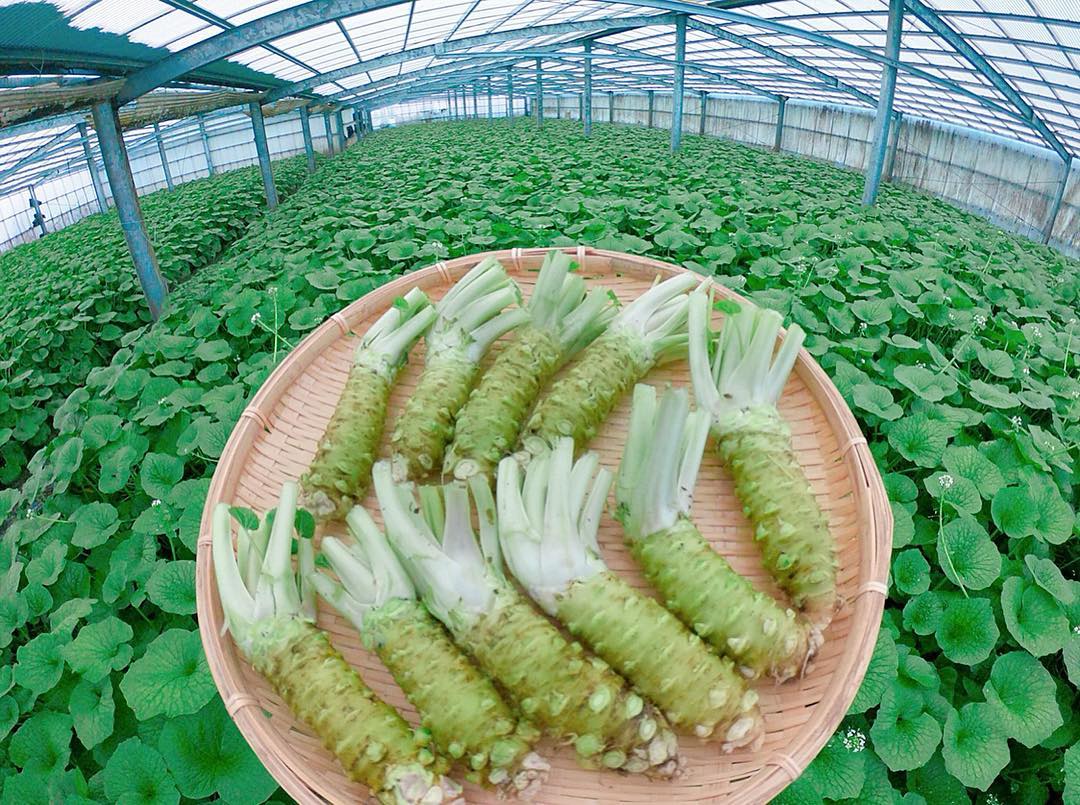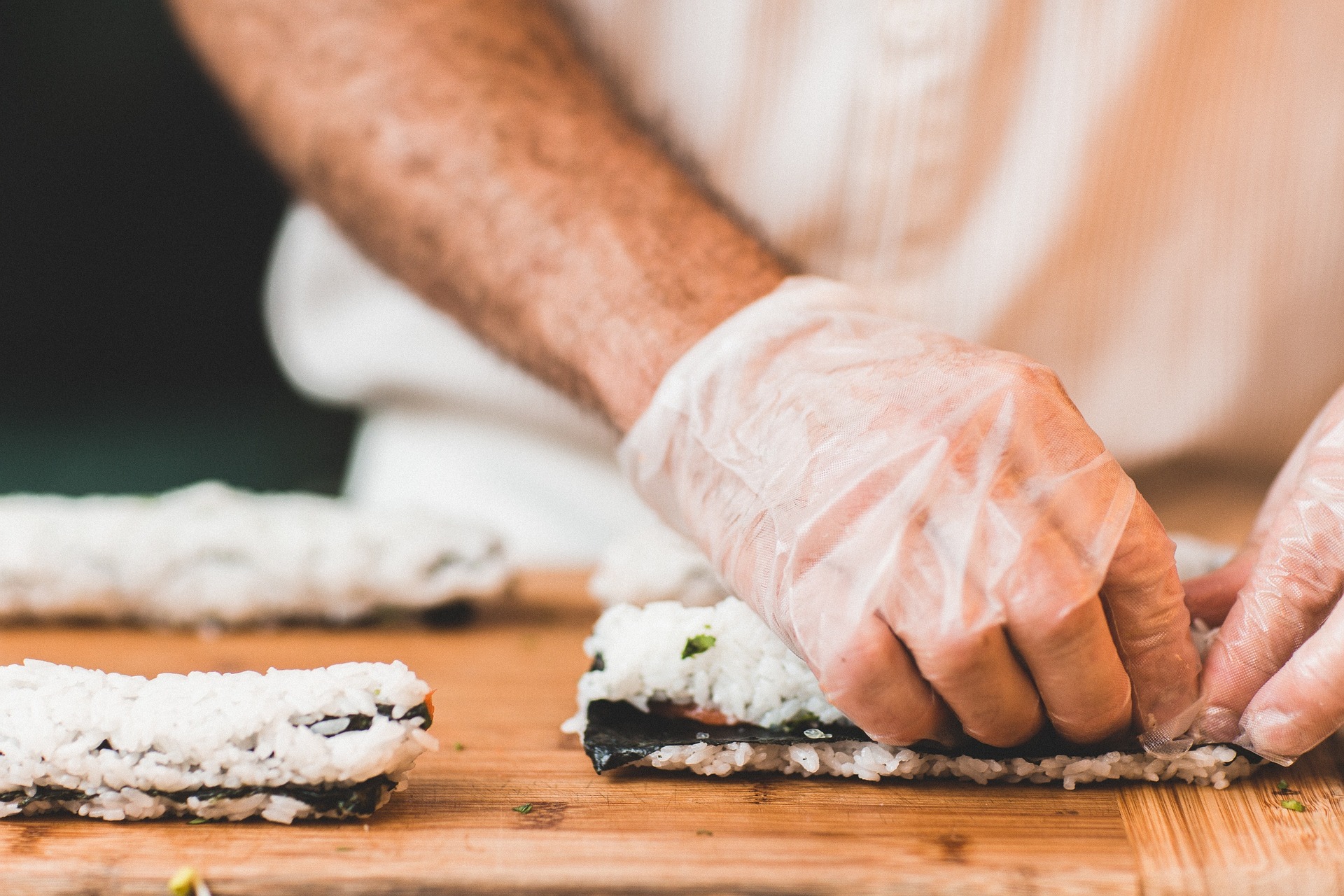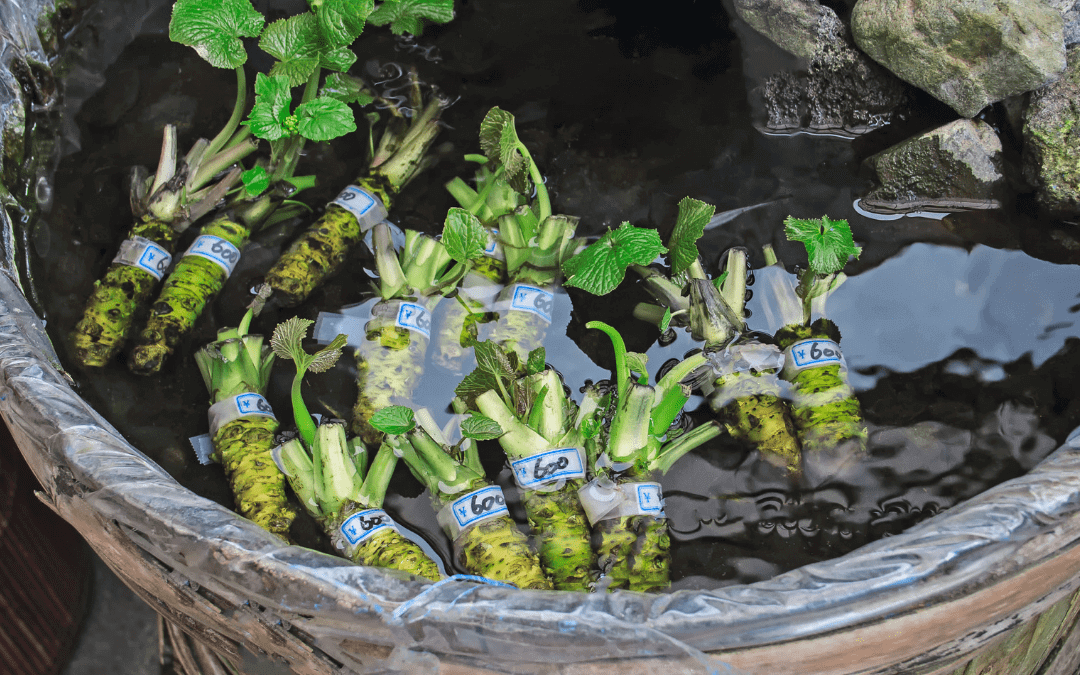We’ve all done it. When at a conveyor belt sushi restaurant, we dump a heap of that green, spicy paste known as wasabi into our soy sauce, and dip our sushi into it so that the rice soaks up all that salty, tongue-numbing mixture.
There are several culinary faux pas we are committing here: one, wasabi is not supposed to be mixed with soy sauce; two, only the fish portion of the sushi is supposed to come into contact with the sauce; and last, most shockingly, that green paste is probably not even “real” wasabi.
In fact, most of the wasabi we consume is simply grated horseradish, which makes a yellow-white paste, and then dyed green with food colouring or spinach powder. Why? Because real wasabi—the stuff you grate straight from the root of the wasabi plant—is expensive.

The wasabi plant is notoriously hard to cultivate as it is fussy about its growing locations. It can only grow at a temperature between 8°C to 20°C, doesn’t like sunlight, and needs constantly flowing water (we are rather like wasabi in this aspect).
It’s rather like the atas, high SES cousin of broccoli and xiao bai cai, as they all belong to the Brassicaceae family of plants. Where broccoli and xiao bai cai are happy to go to the local wet market, you can only find wasabi at Meidi-ya.
With a low supply and high demand, wasabi is more like a luxury food than a cheap, everyday condiment.
However, wasabi was in fact first used not for its taste, but for its antibacterial purposes. Before the invention of refrigeration in ancient Japan, raw fish had to be consumed quickly—even on the spot—or there was a very high risk of food poisoning.

Thankfully, an ingenious Japanese somehow discovered that grating wasabi on raw fish prevented food-borne illnesses from occurring; this was how the practice of adding wasabi to fish started.
Its addition to sushi came a little later. Wasabi’s taste disappears quite quickly when exposed to the air, so the Japanese started to sandwich their raw fish with rice and place the grated wasabi between them. And thus, was the sushi that we know and love today born.
Other than its food-related purposes, wasabi has also been used by researchers for its powerful burning sensation—something all of us have surely experienced when we accidentally ate more wasabi than we intended to.
One scientist has invented a wasabi-based fire alarm for deaf people, which sprays a wasabi vapour into the air in lieu of using emitting shrill ring. It was so effective that it woke one deaf test subject within ten seconds!
Now, if only they had produced a wasabi alarm clock when I had to wake up at 6am to go to school…





I think that for fake wasabi pastes (powder ones and the frozen ones), it tastes disgusting if you directly put it on the fish. These types are better off dissolved in the edge part of the soy sauce dish.
“wasabi is not supposed to be mixed with soy sauce”
this rule only applies for real wasabi, namely Honwasabi.
Thank you for sharing the info.
I like wasabe specially in maki
Thanks for appraising the usefulness of this ingradient.